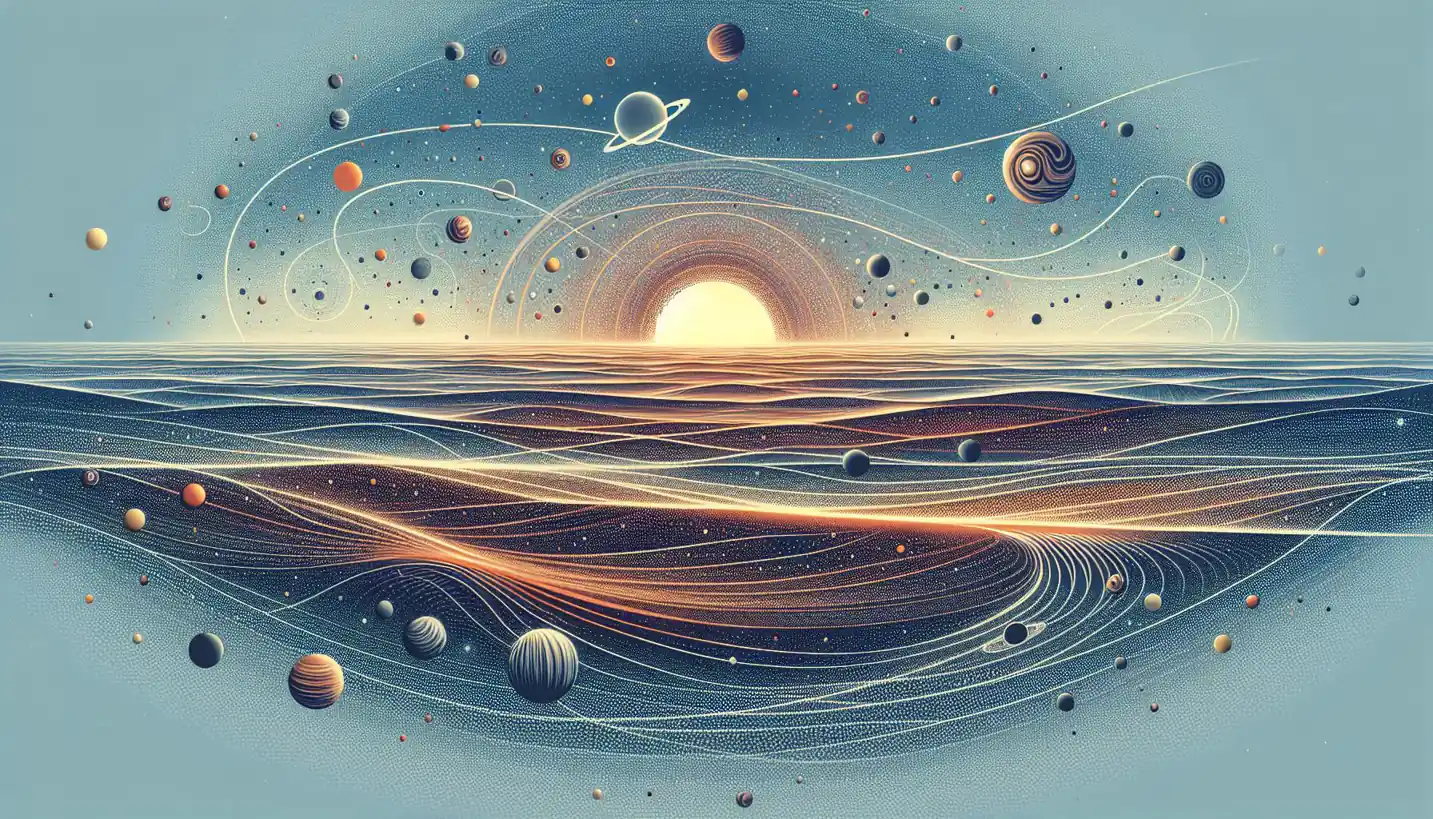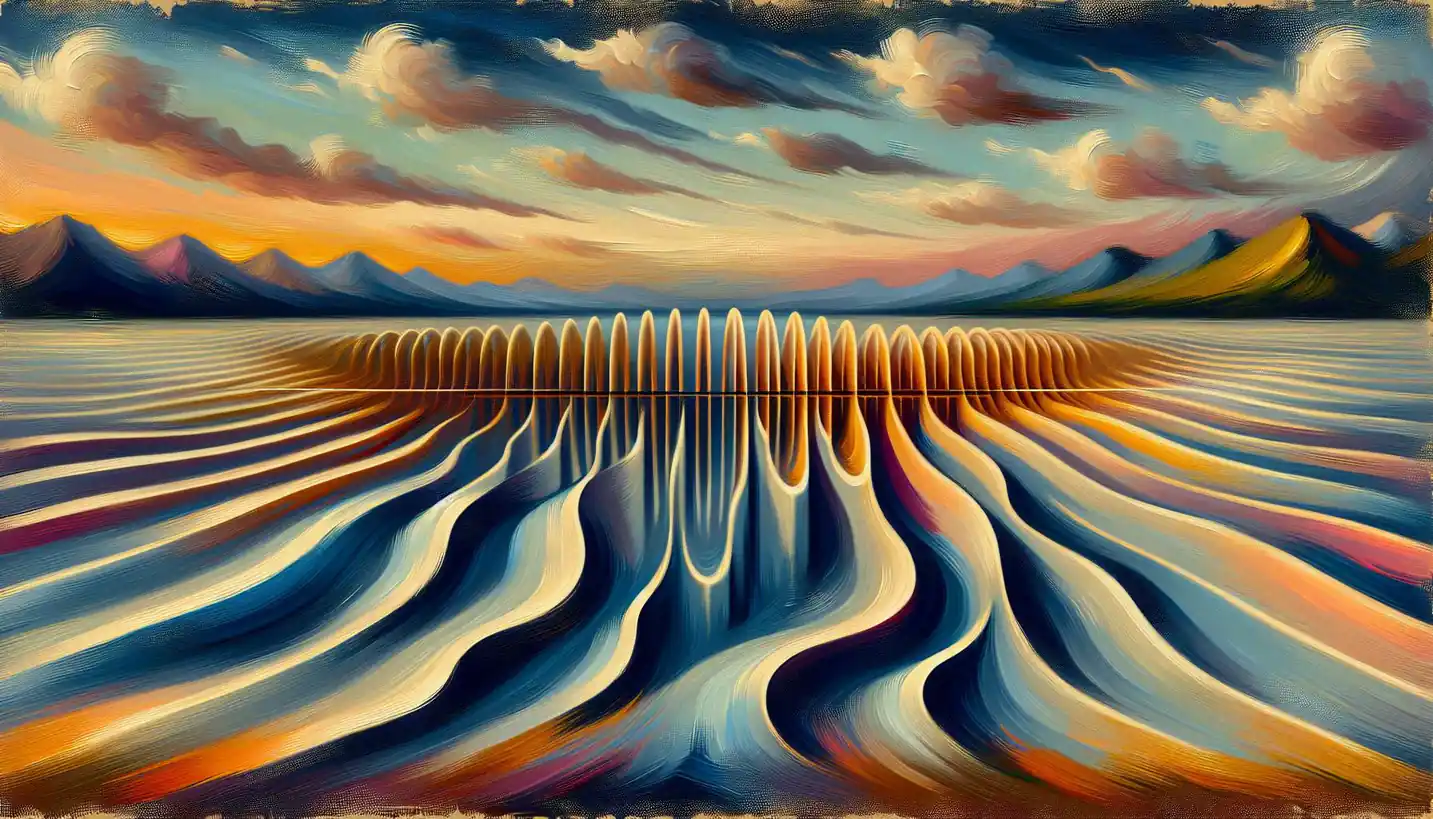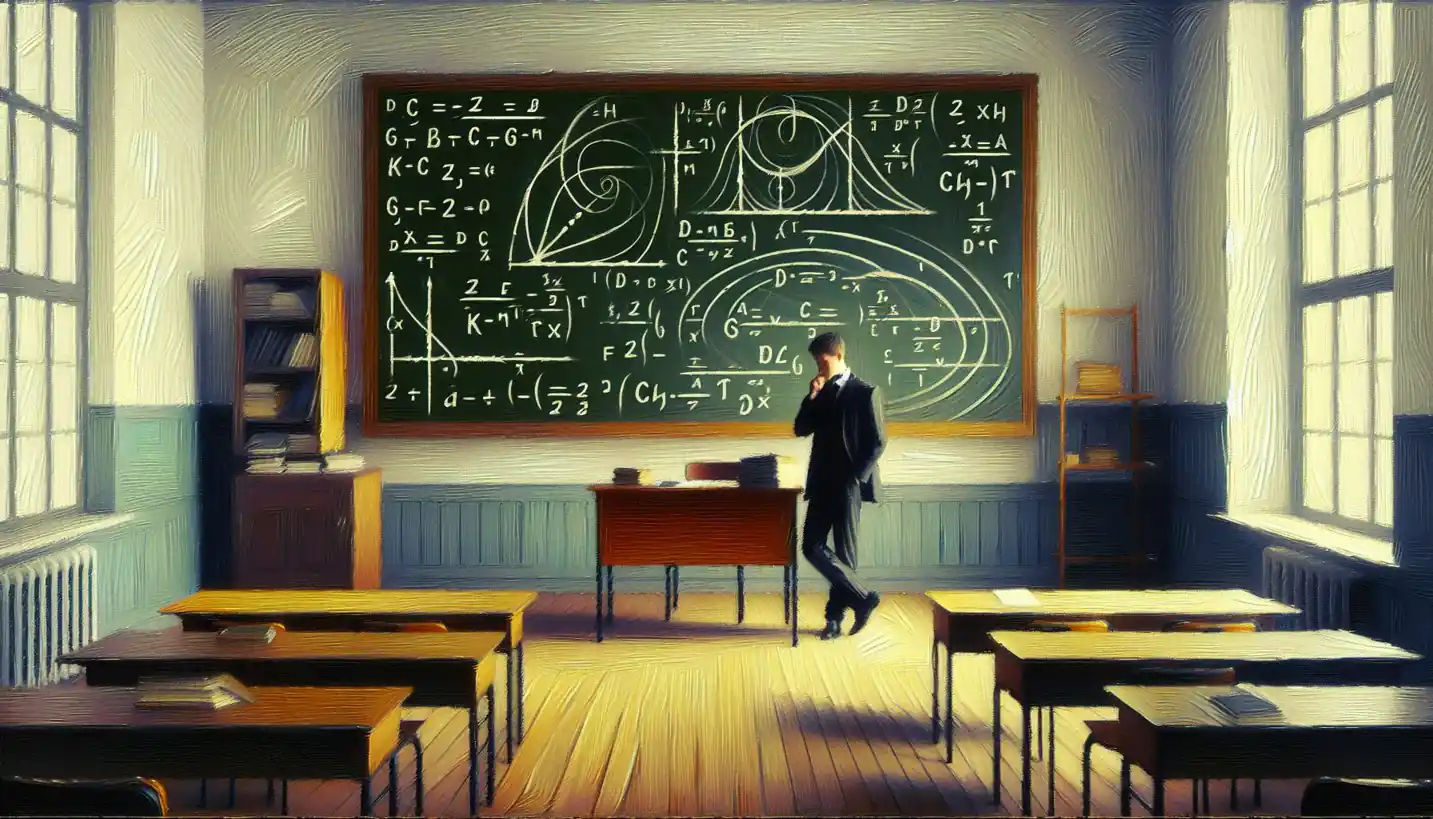· Physics · 5 min read
Nuclear Fission: Unlocking the Atom's Potential
Discover nuclear fission, a powerful process that splits atoms and releases vast energy, pivotal in nuclear physics and power.

Picture this: you’re breaking open a coconut. Crack it in just the right way, and you split it into pieces, revealing all the energy stored inside. This is a bit like what happens in nuclear fission, a process at the heart of nuclear physics that splits the nucleus of an atom to release a tremendous amount of energy.
What is Nuclear Fission?
Nuclear fission is like the ultimate recycling trick of breaking down heavy atoms. Imagine a bowling ball sitting calmly on a seesaw. When you nudge it with just the right force, it rolls down, releasing energy to send the other side flying. In fission, we start with a heavy atom, like uranium or plutonium, and ‘nudging it’ involves a neutron. Once a uranium nucleus captures this neutron, it becomes unstable and splits into two smaller atoms, releasing energy and more neutrons that can split additional atoms.
The Science Behind the Bang
The reason a splitting atom releases energy lies in Einstein’s famous equation, E=mc². This equation shows a small amount of mass can turn into a lot of energy. In fission, a small loss in mass from the original atom transforms into a significant amount of energy.
The Chain Reaction
Here’s where things get really exciting. The neutrons released during fission can strike other uranium atoms, causing more fission reactions and sending yet more neutrons flying like pinballs. This chain reaction can be controlled or uncontrolled. In nuclear power plants, it’s all about control—keeping the reaction steady. But in an atomic bomb, the chain reaction happens all at once, leading to a massive explosion.
Why Nuclear Fission Matters?
Nuclear fission is incredibly important for both energy and science. When you think of clean energy, people often consider wind or solar. But nuclear power plants also play a big role. They produce large amounts of electricity without releasing greenhouse gases, helping to fight climate change, which is a hot topic in our world today.
The Pros and Cons
Nuclear fission has its fans and critics. On the plus side, it’s a powerhouse, generating high amounts of energy from small amounts of fuel, unlike fossil fuels which can pollute the environment. However, it also comes with drawbacks, such as dangerous radioactive waste and the potential for devastating meltdowns, as seen in events like Chernobyl and Fukushima.
Diving into History
The idea of nuclear fission didn’t pop up overnight. It took years of work from scientists around the globe. Let’s take a quick journey back in time to see how it all unfolded.
The Breakthrough
In the late 1930s, researchers Lise Meitner and Otto Hahn were on the case. Hahn, working in Germany, conducted an experiment that puzzled him. When Meitner, who had fled to Sweden due to Nazi persecution, got her hands on the data, she realized they had split the atom. She’d cracked the code of nuclear fission. This was a turning point in the world of physics, forever changing how we understand matter.
Fission in Action: Power and Weapons
It’s fascinating to see how nuclear fission is harnessed both for good and for more destructive purposes.
Power Plants
In nuclear reactors, fission is used to generate the heat needed to produce steam that turns turbines and generates electricity. Control rods are used to regulate the chain reactions, making the process safe and efficient.
Weapons
Nuclear weapons, however, operate on a very different principle. By allowing the chain reaction to run rampant, these weapons release staggering amounts of energy in the form of an explosion. This is what happened with the atomic bombs dropped in World War II on Hiroshima and Nagasaki, which was a direct consequence of fission’s potential being unlocked for pure destruction.
The Future of Nuclear Fission
With all its risks and rewards, nuclear fission continues to be a hot topic of debate and research. Scientists are continuously working on improving the technology and safety of fission reactors.
Safer, Cleaner Energy?
One avenue researchers explore is using thorium as an alternative fuel to uranium. Thorium reactors produce far less radioactive waste and carry fewer risks of meltdown, offering a possible future for cleaner nuclear energy.
New Frontiers
Additionally, some researchers dream of nuclear fusion—a different process where energy comes from combining atoms rather than splitting them—because it promises even more energy without the dangerous byproducts. But fusion remains a tantalizing goal, yet out of reach, which makes mastering fission all the more critical today.
Curiosity and Questions
Nuclear fission is a doorway into understanding the vast power locked within atoms. It has allowed humanity to glimpse the immense potential tucked away in nature’s building blocks. But it also raises questions about how we harness such power responsibly. Should we focus more on refining safer fission technology or put our efforts into making fusion viable? How do we manage the waste and environmental risks?
Conclusion
In this world where energy demand is ever-increasing, nuclear fission offers both a remarkable opportunity and an imposing challenge. It stands as a testament to human ingenuity and the persistent quest to unravel nature’s deepest secrets. Whether nuclear fission will be a bridge to a cleaner future or a relic of past energy strategies remains to be seen. What we do know is that the atom’s story is far from over, and as curious minds delve deeper, we can anticipate incredible advances lying just beyond the horizon.

